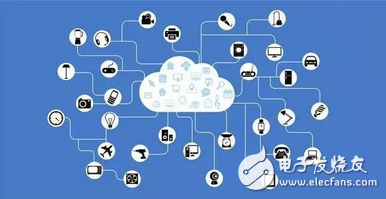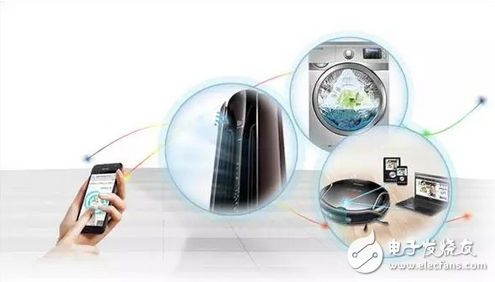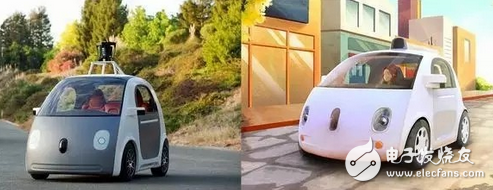The Internet of Things connects cars, wearables, and all daily necessities to the cloud, which is a hot topic in the technology field. Chip makers in the Internet of Things, including Qualcomm and Intel, are working to extend the chip to more diverse areas. Smartphone manufacturers, including Apple and Samsung, are also promoting their own wearables and smart home devices.

According to Accenture's survey, approximately 87% of consumers are ignorant of the IoT market. Therefore, it is necessary for us to take a moment to understand this emerging industry.
There will be 50 billion to 2 trillion connected devices in 2020
According to communications giant Cisco, there are about 15 billion to 50 billion connected devices worldwide by 2020. Intel is more optimistic that at least 2 trillion smart devices will be connected to the Internet.
All of these connected devices will take full advantage of Internet software, hardware and processors. Cisco has introduced a scalable solution for deploying IoT systems that creates analytical systems that analyze accumulated data and strengthen its network security portfolio to address new security threats. Both Intel and Qualcomm have introduced low-power IoT chips for use in IoT devices such as wearables and drones.
Expand to 1.7 trillion US dollars in global markets by 2020
Research institute IDC (International Data Corporation) expects that the market capacity of IoT devices and corresponding services will increase from 656 billion in 2014 to 1.7 trillion US dollars in 2020, and the growth rate will increase with the increase of access devices and bandwidth. The maturity and acceleration of the supporting services.
IDC believes that the output value of sensors and functional modules will reach 32% of the entire industry. This will lead to the maturity of specialized IoT platforms, software, and cloud services.
$79 billion smart home market
Smart home devices, consisting of intelligent hardware and controllers in the cloud or mobile phone, seem to be just a niche market that technology fans are interested in. According to research by Harbor Research and Postscapes, in 2014, the smart home market reached $79.4 billion. This figure is more than the average person knows about the industry. Leading companies in this industry include Samsung, Apple and Alphabet (Google Parent Company).

In 2014, Samsung acquired SmartThings, a smart home company, to strengthen its leading position in the industry. Apple recently launched the Homekit smart home platform, which allows smart home devices to access the iOS system. Alphabet's Nest temperature regulator and versatile network surveillance camera Dropcam are closely linked to Google's services. These devices bring home and mobile phones closer together.
90% of cars will be connected
By 2020, 90% of cars will be connected, and in 2012 this figure was only 2%. Connected cars will greatly enhance the entertainment, autopilot, and embedded systems markets.
On the software side, Apple's CarPlay and Google's Android Auto have implemented the ability to project the contents of the phone to the console of the car. There are rumors that Apple will develop its own self-driving cars, and it is well known that Google's unmanned cars have already been tested on the highway. In terms of in-vehicle systems, BlackBerry's QNX system is still one of the best choices for vendors.

On the hardware side, NVIDIA's Tegra chip currently dominates the automotive market. Automakers such as Mercedes-Benz, Audi, Porsche and Bentley have recently demonstrated the digital concept cockpit driven by NVIDIA. However, Qualcomm and Intel are also actively expanding the market. At this year's CES, Qualcomm released a new generation of Snapdragon chips, and Intel is not to be outdone. Together with Jaguar Land Rover launched the F Pace running SUV.
170 million wearable devices in 2019
Smart watches and smart bracelets have long been considered niche geek toys. But with the launch of Apple Watch, Android Wear devices, and the success of Fitbit products, it has driven a wave of wearables. Subsequently, IDC expects the global wearable market to grow from 76.1 million in 2015 to 173.4 million in 2019.
Wearables will connect smart homes and smart cars, opening the way for further automation. The car can be unlocked, activated, and even summoned by the watch. Similarly, wearable devices can also be used to open the door to the home, automatically turn the lights on and off, and remotely control the equipment at home.
Industrial Internet larger than China's GDP
GE estimates that the "industrial Internet" market, the connected machinery industry, will increase global GDP by 10 to 15 trillion in the next 20 years. In contrast, China's GDP is just over $10 trillion, compared to 17 trillion in the United States. This means that more plant tasks will be automated and connected to the cloud, resulting in significant improvements in speed and industrial production efficiency.
Summary & Outlook
In the future, everything in the world will be connected to the Internet. In this wave of Internet of Things, investors in the science and technology sector should seize the opportunity to have a fuller understanding of the value of the Internet of Things.
iPhone 6S Plus battery with TI IC is only fit for iPhone 6S Plus,not fits for other model.Why we commend battery with TI IC is better? Because battery with TI IC is faster charging,more peresistent power and more safty.
Adoption of the Globally Harmonized Technical Standards
*Chip operation test
*Calorimeter experiment
*Capacitance test
*High and low temperature environment test
*Anti-aging test
*Seismic explosion proof test
IPhone 6S Plus Battery With TI IC
iPhone 6S Plus Replacement Battery,iPhone 6S Plus Li-ion Battery,iPhone 6S Plus battery with TI IC,iPhone 6S Plus Li-ion Battery with TI,iPhone 6S Plus Battery
Shenzhen Aokal Technology Co., Ltd. , https://www.aokals.com